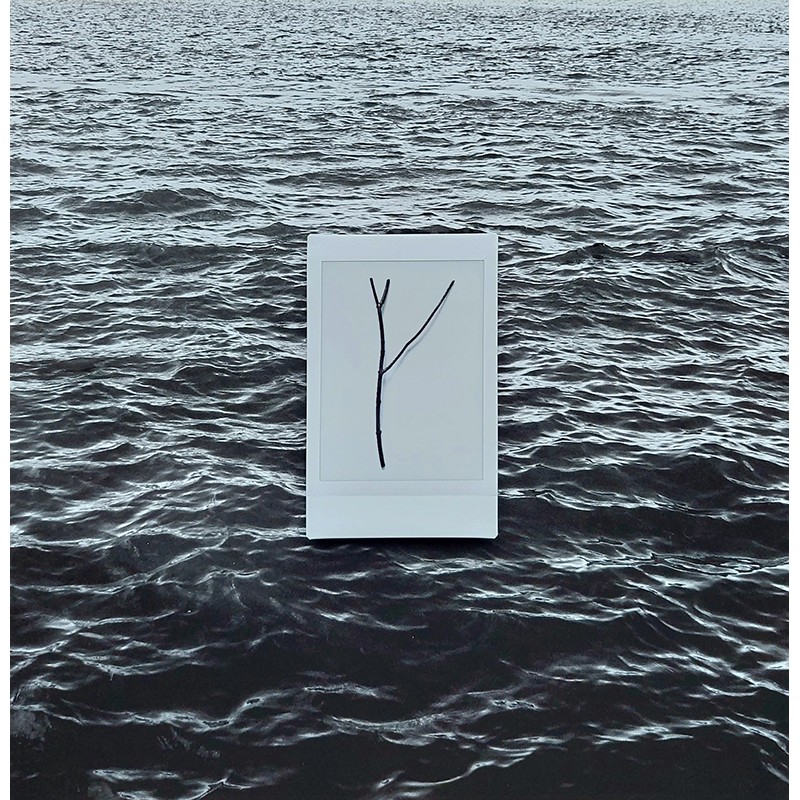Catherine Lata - Case study

Gallery "Pod 11" / Museum of the History of Katowice, 11 Kopernika St. / vernissage on Thursday, January 19 at 17:00

The contemporary art viewer experiences non-obvious collisions and contrasts in exhibition spaces. Instead of narrative layouts or legibly segregated collections, gallery walls increasingly display images seemingly unrelated to each other, connected by a secret link, a hidden glue, not always decipherable. Such a non-obvious structure, based on visual and technological contrast, is adopted by the project Case Study by Katarzyna Lata, in which the poetics of pictorial contrast underlies each of the works included in the collection.
Each of the works from this project is based on a technological and aesthetic difference. This is due to the specific montage, based on the juxtaposition of a square, large black-and-white print, with a rectangular, color miniature - a fuji instax instant photograph (85 x 53 mm) pasted over it. While monochrome photos, are associated with the traditional negative-positive process, darkroom processing and art photography, color instaxes bring to mind an amateur process, family fun and ultimately an unmediated way of developing the image, making it difficult to make any changes or manipulations. The subjects of the two groups of photographs are also significantly different. The black-and-white photos are clearly spatial, at times landscape-like, sometimes even showing reflections in the glass, complicating the perspective of the reality recorded in them. Meanwhile, the instant thumbnails usually focus on single objects, centrally integrated into the frame of a vertical frame. Most of the things thus depicted appear against a white background, leveling the impression of depth and at the same time accentuating the aesthetic dimension of each object. The construction of the various juxtapositions thus seems to emanate mainly from contrast and difference.
Such collisions bring to mind the randomness of encounters of things, words, phenomena and associations, exploited in literary and artistic surrealist narratives, fascinated by coincidences, randomness and ambiguities. Their foundations rested on two pillars - Sigmund Freud's scientific psychoanalytic interpretation and the much older tradition of divination and astrology. Both the dream readings proposed by the Austrian scholar and the reading of the stars ignore the direct relationship between the object and the meanings accompanying it. In the dreams deciphered by Freud, each object symbolizes a completely different (detached from the direct reading) phenomenon, just as in the things used in magical practices, in which the fortune-teller looks for unseen and unobvious contents.
Individual works by Katarzyna Lata, juxtaposing objects captured on instax with black and white spaces, thus resemble astrological constellations, or dreams. The attempt to decipher the content in these contrasting systems presupposes a reading of the relationship between a smaller phenomenon (a celestial body, an object appearing in a dream) and a space (a constellation, or a dreamed reality). References to the poetics of ambiguous readings, moreover, appear in the works of Katarzyna Lata, where there is no shortage of objects referring to divination practices. After all, open hands, fingerprint lines, playing cards and even eggshells are sometimes used in the process of reading hidden contents. In some cases, imagery close to surrealism is indicated by other categories - so-called found objects (a key, compass, cup, as well as sculptures and paintings) or natural objects (a twig, stone or apple) more or less incidentally related to the background - a place or view visible on a black and white background.
While in the viewer's imagination secret connections between objects and spaces can become the reason for individual associations, the key to reading the non-obvious montages lies in the author's memory, in direct associations of things with specific places in the world. Added to this are the invisible figures in the photographs. For it turns out that each montage is inspired by a real person, to whom the places and things visible in the photos often refer. For example, for the uninitiated viewer, a photograph of a New York ice rink juxtaposed with a wrinkled apple immortalized on an instax may evoke a symbolic connection (New York is popularly referred to as the "Big Apple"), although in fact the composition evokes the artist's father, who resides in the American metropolis. Each subsequent work features a different person, as well as objects, spaces, phenomena and places associated with him, recalled by poetic juxtapositions.
- Witold Kanicki






Catherine Lata
Visual artist, photographer, curator and popularizer of photography. Creates in the area of visual arts. Conducts lectures on photography, self-portrait and exhibition at the School of Information Technology in Katowice and at the ZPAF Photography Studio in Warsaw. Curator of four City of Gardens Galleries in Katowice.
Graduate of the Academy of Fine Arts in Cracow (Graphics Department in Katowice 1999). Member of the Union of Polish Artists (since 1999), Union of Polish Artists Photographers (since 2000), and member of the Artistic Council of ZPAF (since 2017). Curator of the Katowice Gallery of the ZPAF (2000 - 2017), Vice President for Artistic Affairs of the Silesian District of the ZPAF (2002 - 2005), President of the Silesian District of the ZPAF (2005 - 2017).
Coordinator of the European project "CreArt Network of Cities for Artistic Creation". in Katowice
(2017-2022). Initiator and coordinator of Gallery Night in Katowice (NOC-K - since 2015).
Author of more than a dozen solo exhibitions, dozens of group exhibitions and photographic happenings, editor of photography books and coordinator of projects documenting Silesia. She has curated more than 300 exhibitions and has served as a juror for numerous photo competitions and portfolio reviews.
In 2010, she received the award from the Ministry of Culture and National Heritage for her creative achievements and contributions to Polish culture, and in 2017 she received the Bronze Medal for "Meritorious Service to Culture Gloria Artis."
Works in collections: National Museum in Cracow, Silesian Museum in Katowice, Ministry of Foreign Affairs, ZPAF Phototeque in Warsaw, Silesian Collection of Artistic Photography in Katowice, Municipal Museum in Sosnowiec and in private collections.
